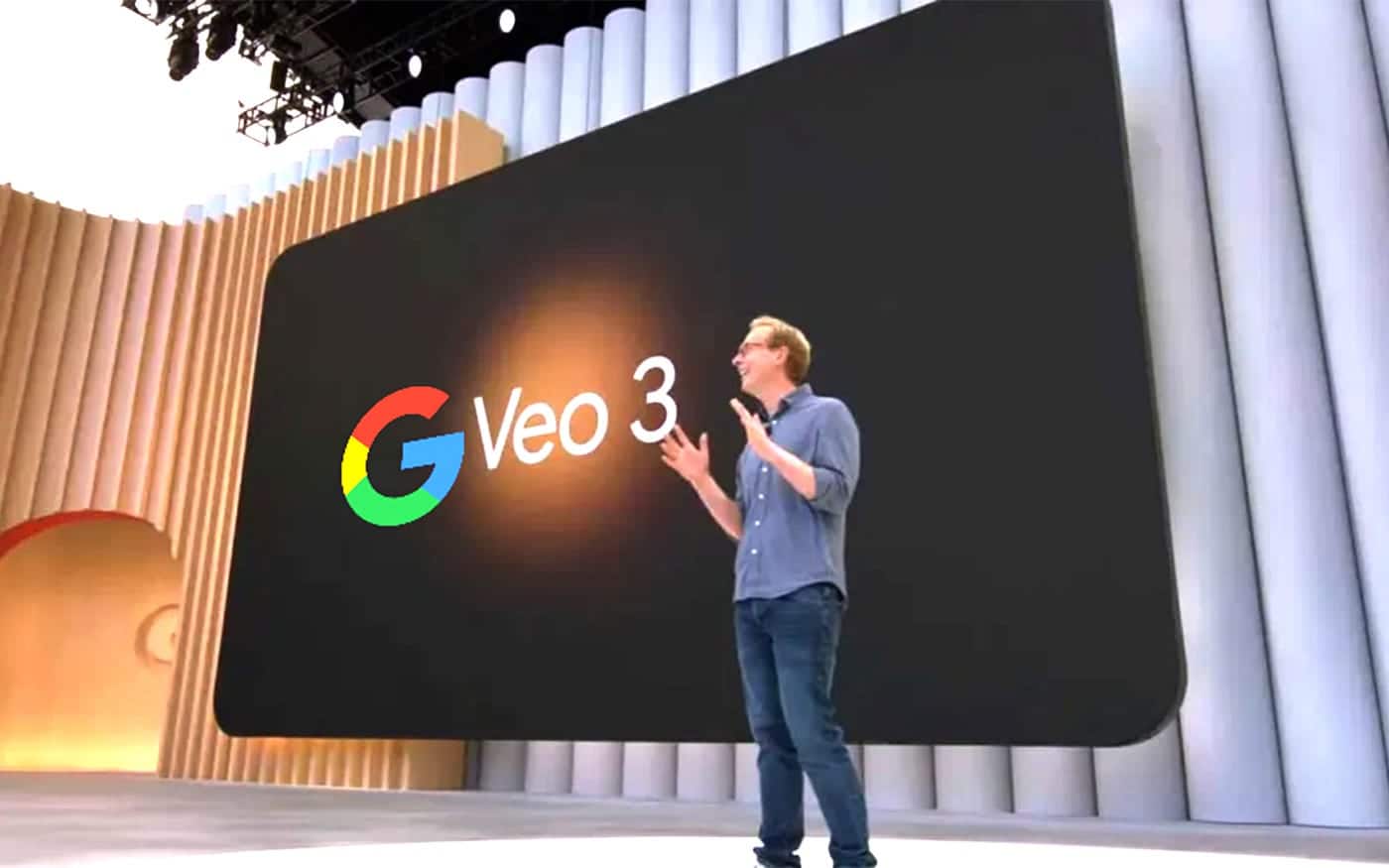If you’ve been keeping up with AI video generation, you’ve probably heard whispers about Google’s latest creation: Veo 3. But here’s the thing, most people are scratching their heads wondering what actually separates Veo 3 from its predecessor, and more importantly, whether they should care.
Veo 3 is Google DeepMind’s latest AI video generator that can create synchronized audio and video content. Think of it as the difference between a silent film and a full Hollywood production. While the original Veo could generate impressive visuals, Veo 3 brings native audio generation to the table, complete with dialogue, sound effects, and ambient noise that actually matches what’s happening on screen.
But here’s where it gets interesting—while Google’s making headlines with their cutting-edge tech, there are practical alternatives like vidBoard that deliver professional results without the enterprise-level price tags or waiting lists. Let’s dive into what makes Veo 3 tick, and more crucially, what it means for creators like you who need video solutions that work today.
What Exactly Is Veo 3?
Imagine trying to explain a movie to someone using only gestures—that’s essentially what first-generation AI video tools were doing. Veo 3 represents the first time an AI model can think in both pictures and sounds simultaneously, creating what Google calls “audiovisual content” rather than just moving pictures.
The technical specs are genuinely impressive: we’re talking about a 49-billion-parameter transformer architecture that processes both temporal audio and spatio-temporal video data. In plain English? It’s a massive AI brain that understands how sounds and images work together to create believable scenes.
Image Recommendation: Insert a side-by-side comparison showing Veo vs Veo 3 output quality, highlighting the audio waveform integration in Veo 3.
The model can generate 8-second clips in resolutions up to 4K, with lip-sync accuracy within 120 milliseconds—which means the delay between sound and motion is virtually imperceptible. For context, that’s faster than most people can detect audio-visual desync in regular videos.
Key Features That Set Veo 3 Apart
Native Audio Generation
This is the headline feature. Unlike competitors that require separate audio tools, Veo 3 produces synchronized dialogue, sound effects, and ambient noise in real-time. We’re not talking about generic background music—this system generates contextually appropriate audio that matches the action frame by frame.
Superior Video Quality
The jump from the original Veo is substantial:
4K resolution capability (compared to Veo’s 1080p maximum)
Temporal consistency score of 8.9/10 (versus industry average of 6.2)
PSNR of 38 dB, representing a 4 dB improvement over Veo 2
Advanced Physics Understanding
Veo 3 demonstrates significantly better comprehension of real-world physics. Water flows naturally, fabric moves believably, and lighting behaves as you’d expect. The model was trained on over 20 million hours of video content, giving it an extensive understanding of how objects interact in the real world.
Professional Camera Controls
Through Google’s Flow platform, users gain access to cinematic camera movements, shot composition tools, and the ability to maintain character consistency across multiple clips.
The Reality Check: Limitations You Should Know
Let’s be honest—Veo 3 isn’t accessible to most creators right now. Here are the practical limitations:
Pricing That’ll Make You Wince
Limited generation credits even on premium plans
Geographic Restrictions
While Veo 3 has expanded to 149 countries, access remains limited to specific subscription tiers. Many creators find themselves on waiting lists or dealing with regional availability issues.
Generation Limits
Even paying subscribers face strict daily limits:
Processing time: Can take several minutes per 8-second clip
Queue delays during peak usage periods
Learning Curve
The Flow interface, while powerful, requires significant time investment to master. Many users report spending hours learning optimal prompting techniques before achieving satisfactory results.
Veo 3 vs vidBoard: The Practical Comparison
Here’s where things get interesting. While Veo 3 dominates headlines, vidBoard offers professional video creation capabilities that are accessible today—without the enterprise pricing or technical complexity.
| Feature | Veo 3 | vidBoard |
|---|---|---|
| Monthly Cost | $249.99 | Lifetime deals starting from $99 |
| Audio Integration | Native AI audio | Professional voice cloning + sync |
| Video Length | 8 seconds max | 10-15 mins |
| Learning Curve | Steep (Flow platform) | Intuitive interface |
| Availability | Limited regions | Global access |
| Business Focus | Enterprise/experimental | SME/practical use |
| Template Library | None | 100+ professional templates |
| Multi-language | Limited | 50+ languages supported |
Image Recommendation: Create an infographic comparing the total cost of ownership for Veo 3 vs vidBoard over 12 months, including hidden costs like learning time and generation limits.
Why vidBoard Makes More Sense for Most Creators
Immediate Accessibility: While Veo 3 requires Google AI Ultra subscriptions and often involves waiting lists, vidBoard is ready to use today. No geographic restrictions, no enterprise sales calls—just sign up and start creating.
Practical Video Lengths: Veo 3’s 8-second limit means you’ll need multiple generations and manual editing for any substantial content. vidBoard handles complete presentations, tutorials, and marketing videos in single generations.
Professional Templates: Rather than starting from scratch with complex prompting, vidBoard provides industry-specific templates for everything from real estate showcases to educational content.
Cost Predictability: At $249.99 monthly, Veo 3 costs more than most small business marketing budgets. vidBoard’s transparent pricing means you can budget effectively without surprise overages.
Mastering Veo 3: Prompting Guide
If you do decide to experiment with Veo 3, here are proven prompting strategies:
Effective Prompt Structure
[Scene description] + [Camera movement] + [Audio cues] + [Style modifier]
Example: “A barista preparing coffee in a busy café, dolly zoom towards the espresso machine, steam hissing and cups clinking, cinematic morning lighting”
Advanced Techniques
Specify audio elements explicitly: “with the sound of waves crashing”
Use cinematic language: “crane shot,” “Dutch angle,” “golden hour lighting”
Include temporal markers: “slow motion,” “time-lapse,” “real-time”
Common Mistakes to Avoid
Overloading prompts: Keep descriptions under 200 words
Ignoring aspect ratios: Specify 16:9 for landscape, 9:16 for vertical content
Forgetting audio context: Always mention expected sounds
Pro Tip: The same creative vision that works in Veo 3 can often be achieved more efficiently in vidBoard using voice cloning and template customization—without the complex prompting requirements.
Real-World Use Cases: Who Benefits Most?
Marketing Agencies
Veo 3 approach: Create unique 8-second social media clips with custom audio
vidBoard alternative: Produce complete marketing campaigns with branded templates and professional narration
Educational Content Creators
Veo 3 approach: Generate short explanation clips requiring extensive post-production
vidBoard alternative: Create full lessons with synchronized presentations and multi-language options
Real Estate Professionals
Veo 3 approach: Experimental property showcase clips (expensive and time-consuming)
vidBoard alternative: Professional property tours with scripted narration and branded elements
Small Business Owners
Here’s the truth—most small businesses need consistent, professional video content more than cutting-edge experimental features. vidBoard’s practical approach delivers better ROI for businesses focused on growth rather than bleeding-edge tech.
The Technical Deep Dive: What Makes Veo 3 Tick
For those interested in the engineering marvel behind Veo 3, the architecture represents a significant leap forward in multimodal AI:
Training Infrastructure
Data Sources
Google leveraged its vast content ecosystem, including YouTube’s 20 billion video library. Even using just 1% of available content provided 40 times more training data than competing AI models.
Safety Measures
Did You Know? The development cost for Veo 3 likely exceeded $100 million, which explains the premium pricing structure and enterprise focus.
Troubleshooting Common Veo 3 Issues
Based on early user reports, here are the most frequent challenges:
Generation Failures
Solution: Simplify prompts and avoid complex scene descriptions
Alternative: Use vidBoard’s template system for reliable outputs
Audio Desynchronization
Solution: Explicitly describe audio elements in prompts
Alternative: vidBoard’s voice cloning maintains perfect sync automatically
Quality Inconsistency
Solution: Use consistent styling keywords across generations
Alternative: vidBoard templates ensure brand consistency across all content
Cost Overruns
Solution: Carefully monitor generation credits
Alternative: vidBoard’s predictable pricing eliminates budget surprises
The Future of AI Video Generation
Where is Veo 3 heading? Based on Google’s roadmap and industry trends:
Longer generation times: Moving beyond 8-second clips
Real-time generation: Reducing processing delays
Enhanced character consistency: Better multi-shot narratives
Advanced editing capabilities: Post-generation modification tools
But here’s the critical point—while Google develops tomorrow’s technology, businesses need video solutions today. The “future” of AI video might be impressive, but it doesn’t help you create next week’s marketing campaign or training materials.
vidBoard bridges this gap by delivering professional results with current technology, rather than making users wait for experimental features to mature.
Making the Right Choice for Your Needs
The decision between Veo 3 and practical alternatives like vidBoard ultimately depends on your priorities:
Choose Veo 3 if:
Budget isn’t a constraint ($249.99/month is acceptable)
You need cutting-edge audio-visual synthesis
Your use case involves experimental or artistic projects
You have time to master complex prompting techniques
Choose vidBoard if:
You need professional videos for business purposes
Budget matters (most SMEs can’t justify $3,000 annually for video tools)
You want immediate results without technical complexity
Longer-form content is essential for your strategy
Image Recommendation: Insert a decision tree flowchart helping readers choose between Veo 3 and vidBoard based on their specific needs and constraints.
Frequently Asked Questions
What’s the main difference between Veo and Veo 3?
The primary distinction is native audio generation. While the original Veo produced only visual content, Veo 3 creates synchronized audio including dialogue, sound effects, and ambient noise with lip-sync accuracy under 120 milliseconds.
How much does Veo 3 actually cost to use regularly?
Veo 3 requires Google AI Ultra subscription at $249.99/month, though new users get 50% off the first three months. However, you’re still limited by daily generation quotas and processing times, making the effective cost-per-video quite high.
Can I use Veo 3 for commercial projects right now?
Yes, but with significant limitations. Commercial use requires the Ultra subscription, and you’re restricted to short-form content (8 seconds maximum) with visible watermarking on all outputs. Most commercial applications require extensive post-production work.
Is Veo 3 better than OpenAI’s Sora for business use?
Veo 3 offers superior audio integration compared to Sora’s silent output, but both platforms face similar challenges: high costs, limited availability, and short generation times. For most business applications, dedicated platforms like vidBoard provide better practical value.
What are the main limitations I should know about before subscribing?
Key limitations include 8-second maximum video length, geographic availability restrictions, steep learning curve for optimal results, daily generation limits even on premium plans, and mandatory watermarking on all content.
The Bottom Line: Innovation vs Practicality
Veo 3 represents genuine innovation in AI video generation. The ability to create synchronized audiovisual content marks a significant technological leap, and Google’s engineering achievement deserves recognition.
But innovation doesn’t always equal practical value. For most creators, entrepreneurs, and businesses, the combination of high costs, limited accessibility, and experimental nature makes Veo 3 more of a “nice to have” than a practical tool.
vidBoard takes a different approach by delivering professional video creation capabilities that work today, at prices that make sense for real businesses. While Veo 3 impresses with cutting-edge features, vidBoard focuses on solving actual problems: creating professional presentations, marketing content, and educational materials efficiently and affordably.
The future of AI video generation is undoubtedly exciting, but your business needs solutions that work in the present. Whether you’re a marketing agency looking to scale content production, an educator creating engaging lessons, or an entrepreneur building brand awareness, the question isn’t whether you can access tomorrow’s technology but whether you can succeed with today’s tools.
Ready to start creating professional videos without the enterprise pricing or technical complexity? Try vidBoard’s free trial and discover why thousands of creators choose practical solutions over experimental platforms. Your first professional video is just minutes away without having a PhD in prompt engineering.
























